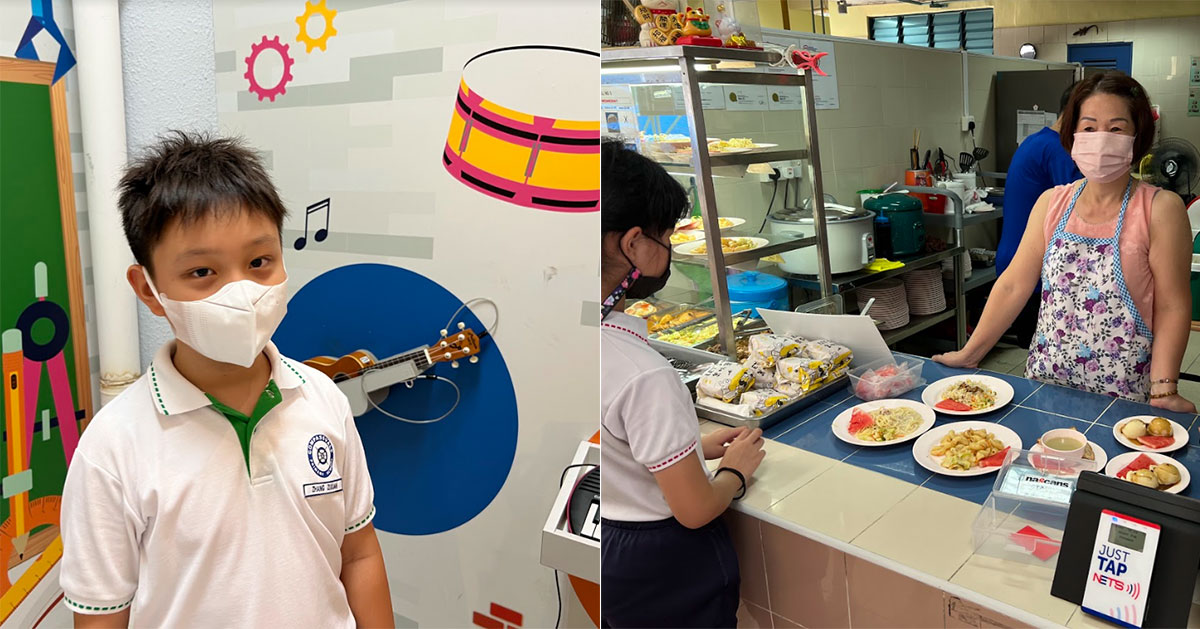When I was in primary school, which was like 30 years ago, Singapore was a different place.
There was no internet.
Public buses had no air conditioning.
Television programming wasn’t 24 hours.
Ah, simpler times.
These days, things have changed – or so I was told.
Children get to explore, pursue their interests, speak their minds, and are spoken to instead of talked down to.
To find out what kind of transformation has taken place in the last three decades, I had to go get a look-see for myself.
So, I popped by Compassvale Primary School in Sengkang one fine morning to meet with a student, who showed me around and what the real deal is.
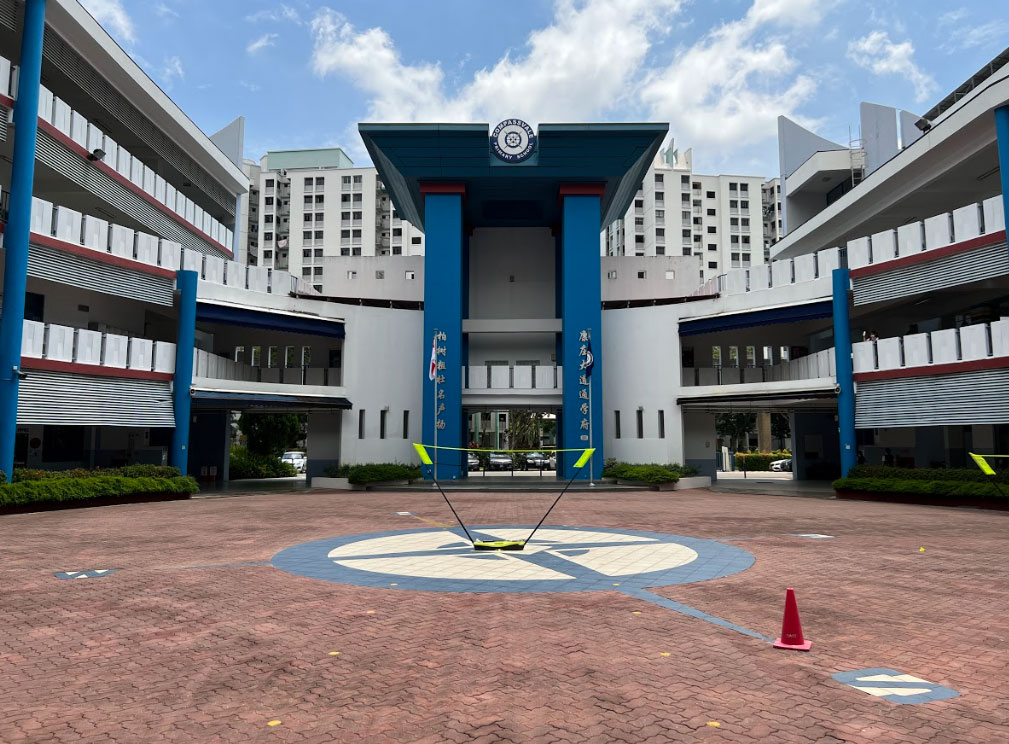
My tour guide, Zixuan
Zhang Zixuan, aged nine and in Primary 3, was my buddy that morning.
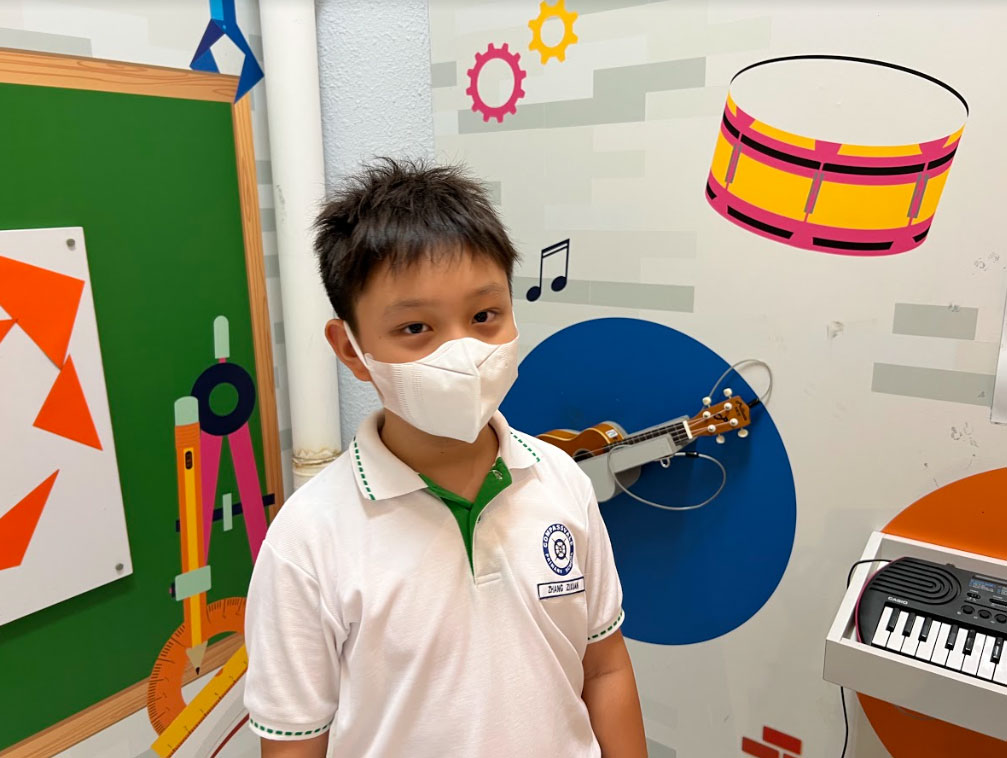 Zhang Zixuan, 9, beyond precocious
Zhang Zixuan, 9, beyond precocious
At an age when I was still learning how to use cutlery properly, Zixuan was already very confident, beyond precocious, and highly eloquent.
After introducing himself without prompting, he was all ready to take me around the school and give me a walking tour, as well as a rundown of what kids get up to these days.
With just a teacher by our side as a minder, he took the lead effortlessly and played host without qualms.
Maker Space
The one place that Zixuan couldn’t wait to bring me to and talk about was the Maker Space.
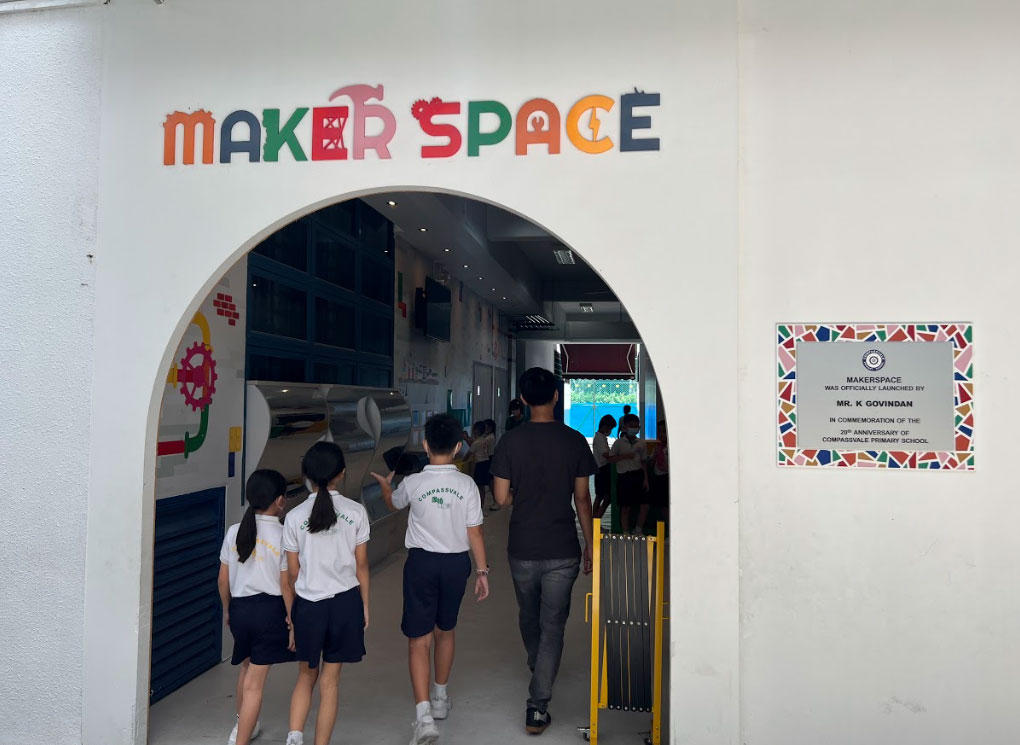 Maker Space for makers
Maker Space for makers
I could see why.
In the olden days, like in the 1990s, schools were set up to be no-frills and purpose-driven.
You went to the classroom to sit down and learn.
The tuckshop was a place to eat.
The music room was where you could blow your recorder.
Every square inch of real estate had a reason to exist.
A venue without a stated purpose was inconceivable.
Which is why the Maker Space was so fascinating.
Not only is the Maker Space open to all students to wander in and out of for fun during break times, it has musical instruments set up for anyone with an interest to play them, or to just use them.
Puzzles on the wall are there for students to meddle with.
It is all free and easy.
If you had enough, you just got out.
No permission needed.
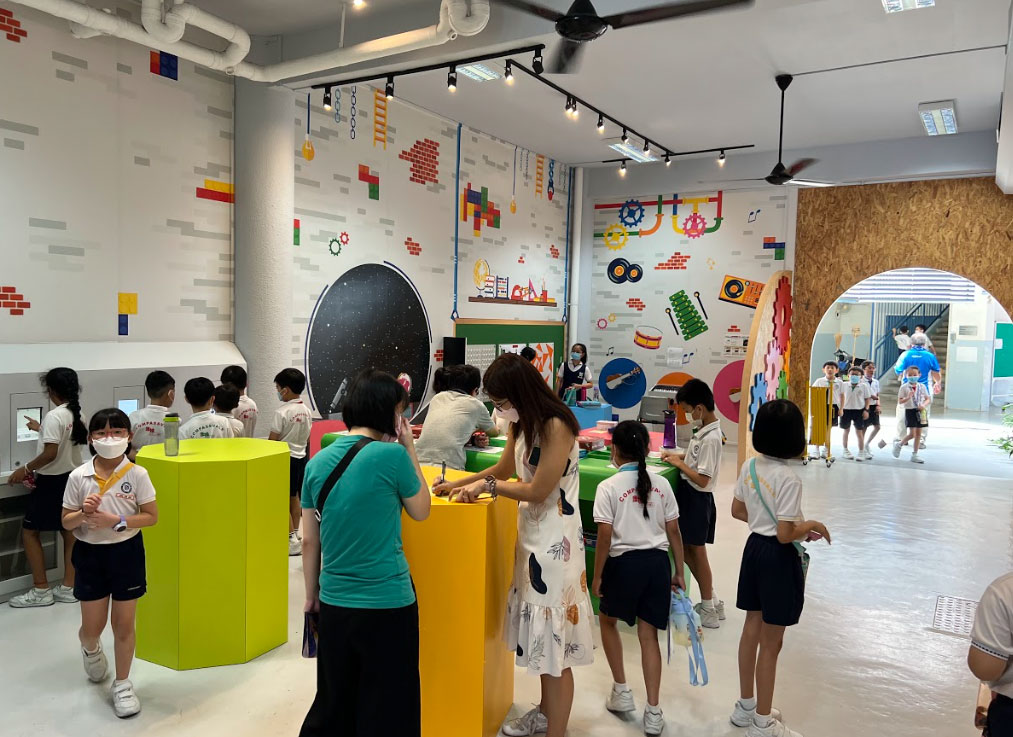 Kids filling their minds with creativity
Kids filling their minds with creativity
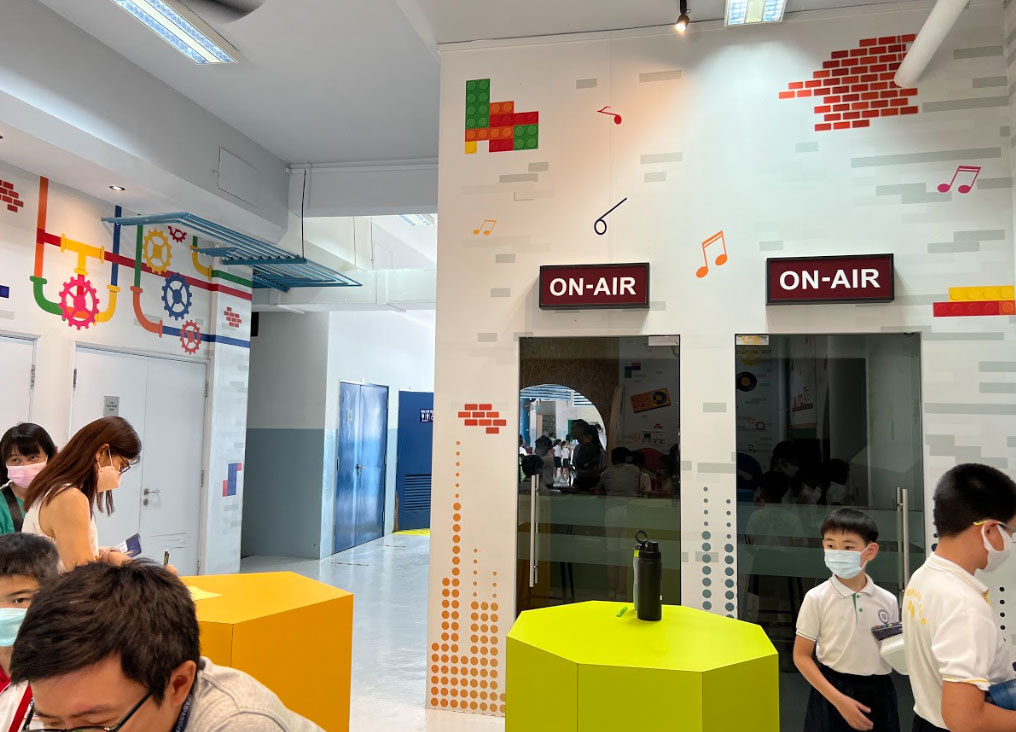 Students getting hands-on experience
Students getting hands-on experience
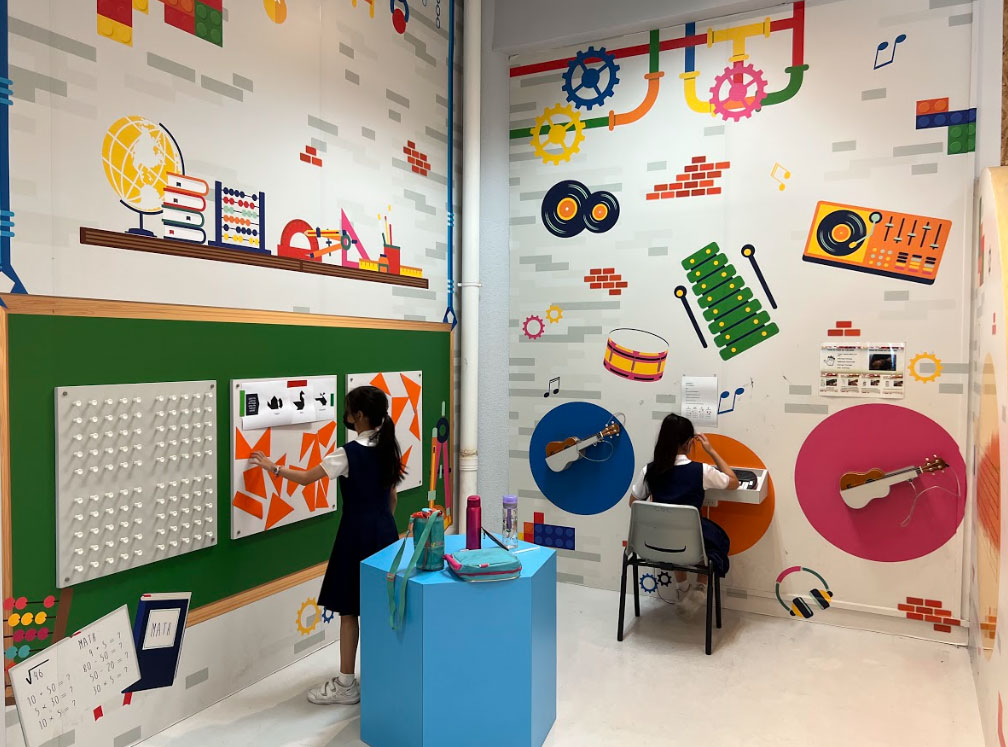 Puzzles, ukuleles, a keyboard, are some of the items for makers
Puzzles, ukuleles, a keyboard, are some of the items for makers
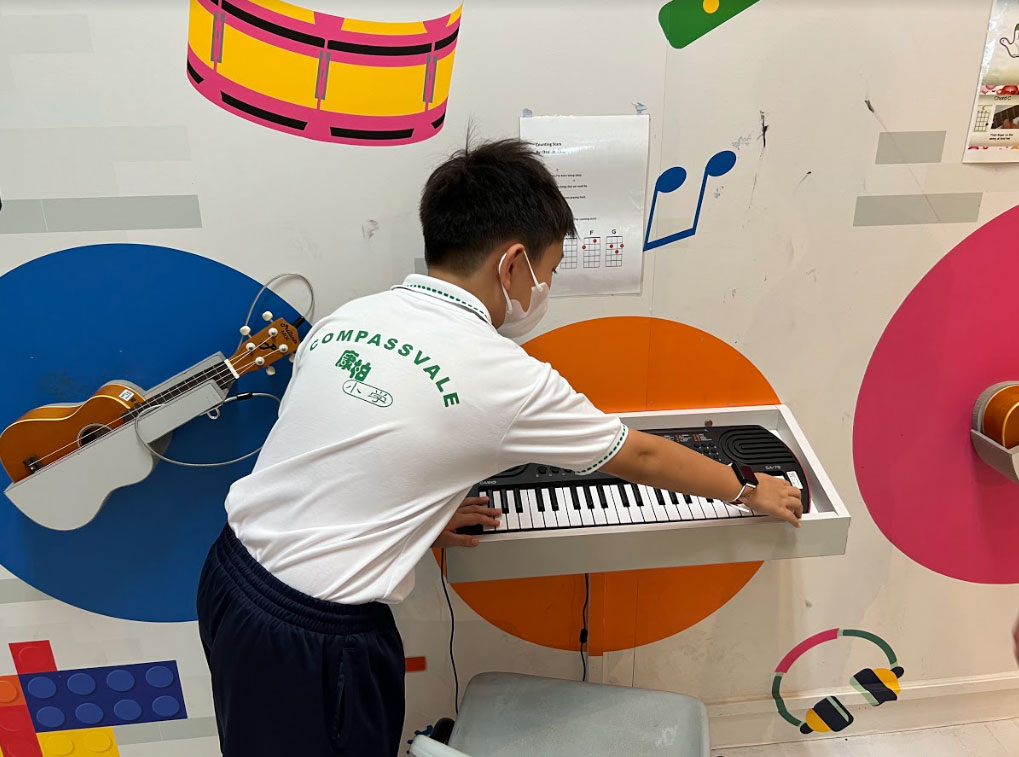 Not the biggest keyboard around
Not the biggest keyboard around
Not only did this encourage students to fulfil their own curiosity, they were also able to allocate as much time as they had to the different activities whenever they were free on the premises.
Garden
The next venue that got Zixuan worked up was the garden.
Over there, various classes had been given plots of land that students could tend to and grow their plants outdoors.
This provided a tactile learning and hands-on experience outside the classroom beyond just reading books.
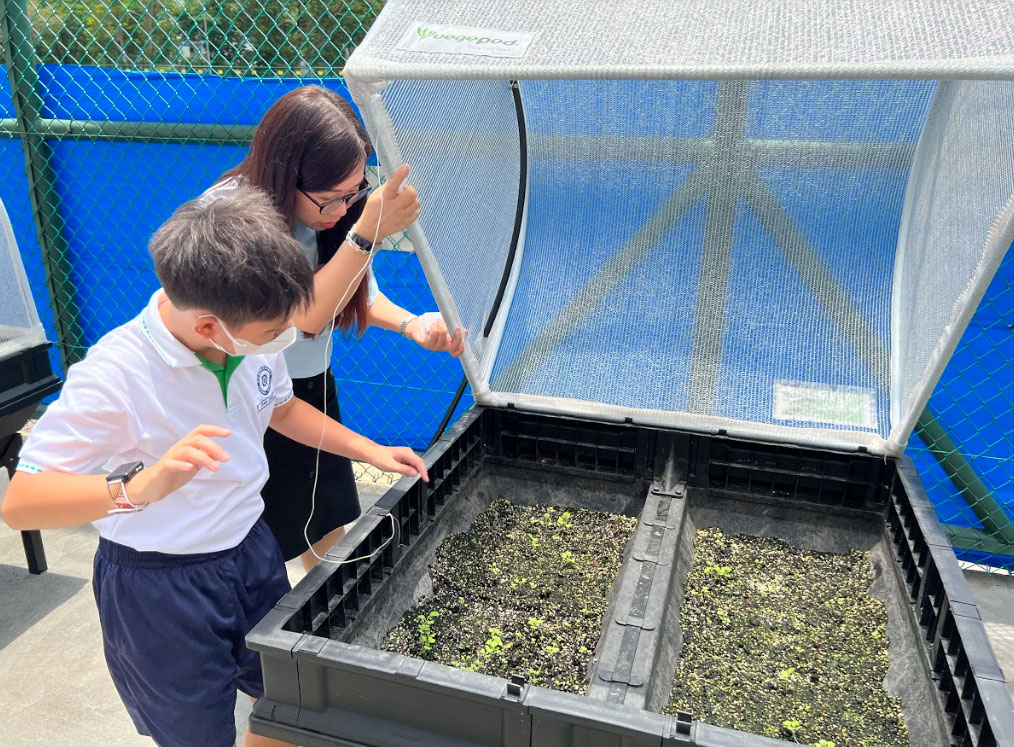 Taking care of their plot
Taking care of their plot
During my time, the only thing you were supposed to grow was confidence and your rote memory.
Even then.
Pond
Apparently, peace and tranquillity are quite big with young children these days.
Even while Zixuan has yet to hit a double digit age, he enjoys going to the pond in his school to watch the fishes swim around as it is highly therapeutic.
He said: “We come here to see the fishes. It is a place to relax.”
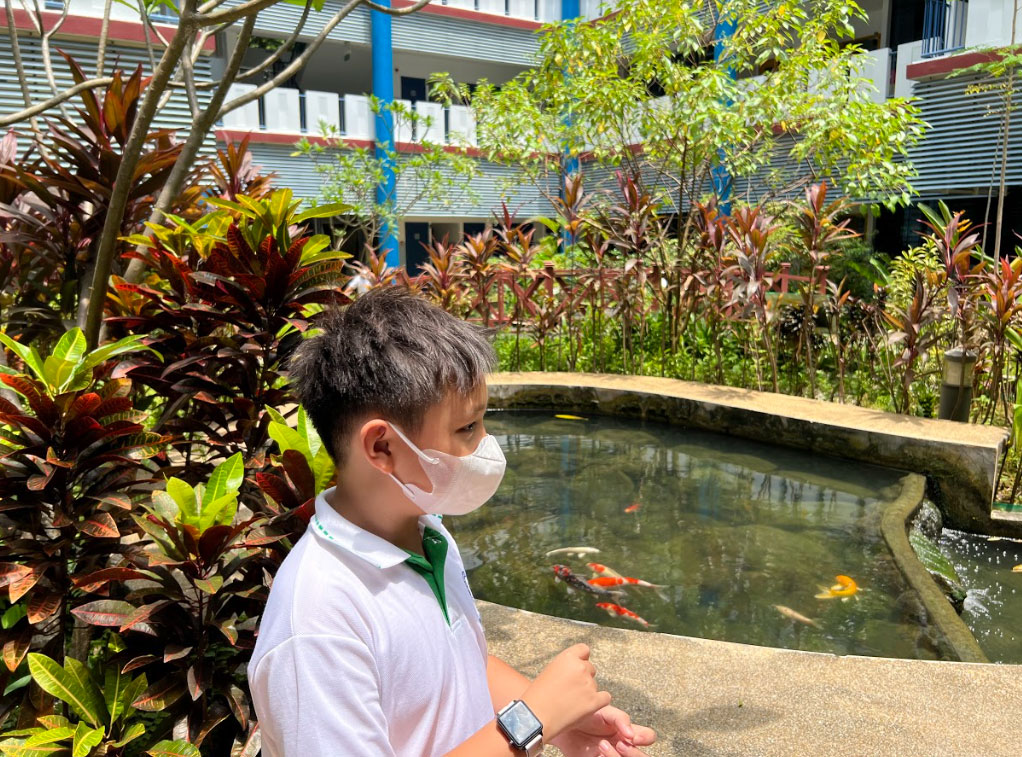 Watching the fish go by
Watching the fish go by
This was highly surprising and extremely respectful to animals, as during my time, ponds were a great place to introduce whatever was inside with whatever we were eating.
With better filtration methods and higher quality pumps, ponds have also become less murky with less algae inside over the years.
Tuckshop
The most-loved spot in the entire school has to be the tuckshop.
This was where I learnt that kids refuel once to twice each school day, which typically lasts from 7:30am to anytime between 2pm and 3pm.
And boy have things changed.
When I was still a school-going child, the tuckshop was a place to buy cheap soft drinks (40 cents a cup) in lieu of eating real food that provided more than just empty calories.
These days, the quality of tuckshop food has clearly deviated from the norm in the 1990s.
There is no deep fried food on display.
No lemak curry chicken drenched rice.
Canteen food has become more focused on providing essential nutrition.
Zixuan said he likes chomping on burgers from the Western food stall.
One burger, at S$1.70 – a steal, really – is packed with carbohydrates and protein.
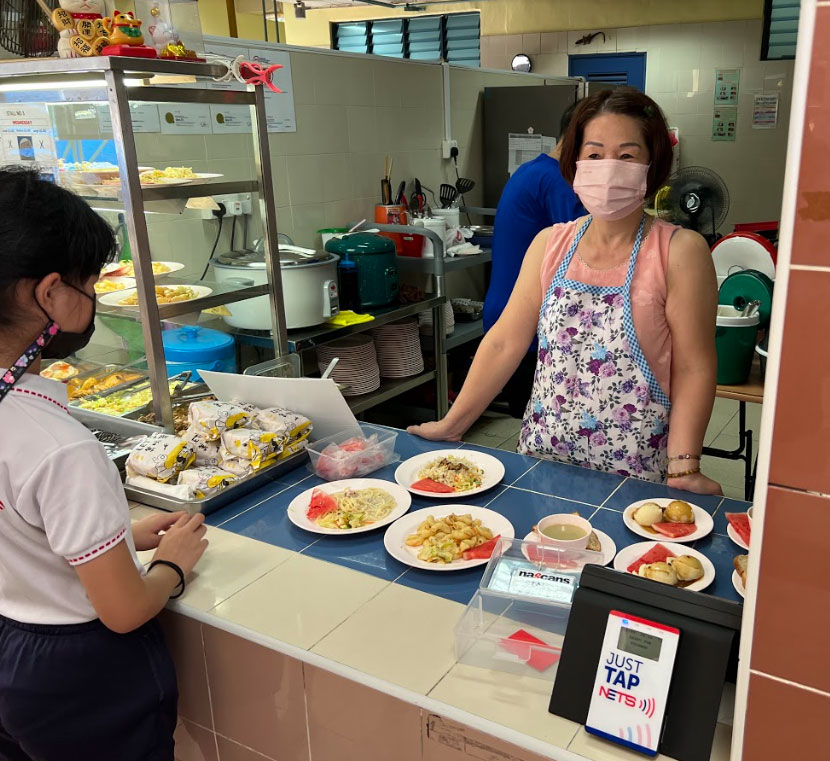
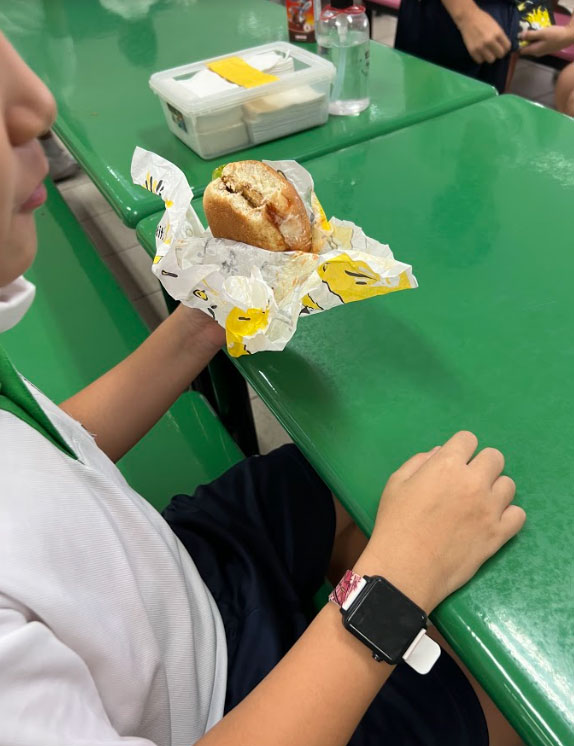
Paying for things
But what really blew my mind was how far technology has come.
Back in the day, if you forgot to bring cash, you were done for.
If you didn’t bring your watch, you couldn’t tell the time while roaming around school grounds.
And if you lost either, they were usually gone for good.
Zixuan goes to school each day with a smart watch that tells the time and allows him to pay for things in the tuckshop and bookshop.
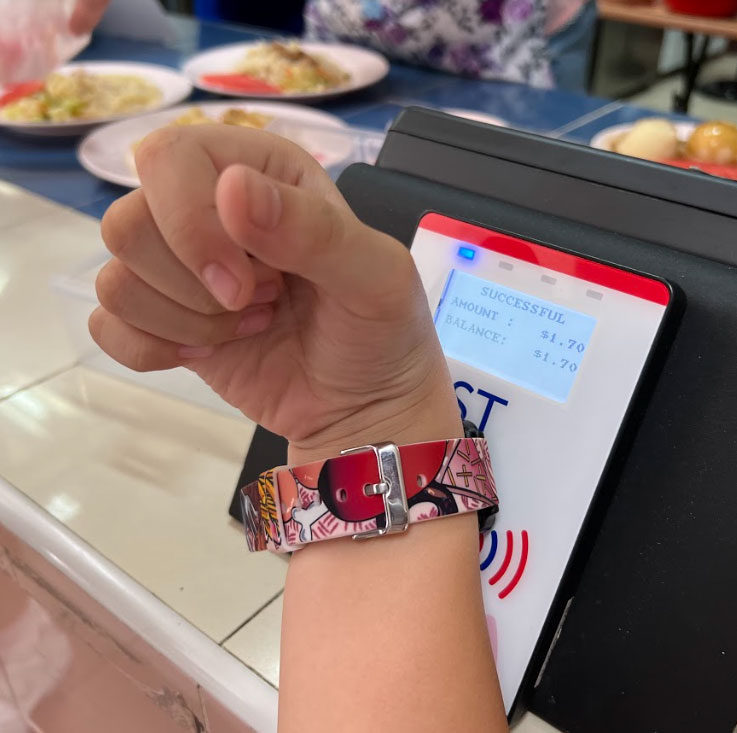 Beep
Beep
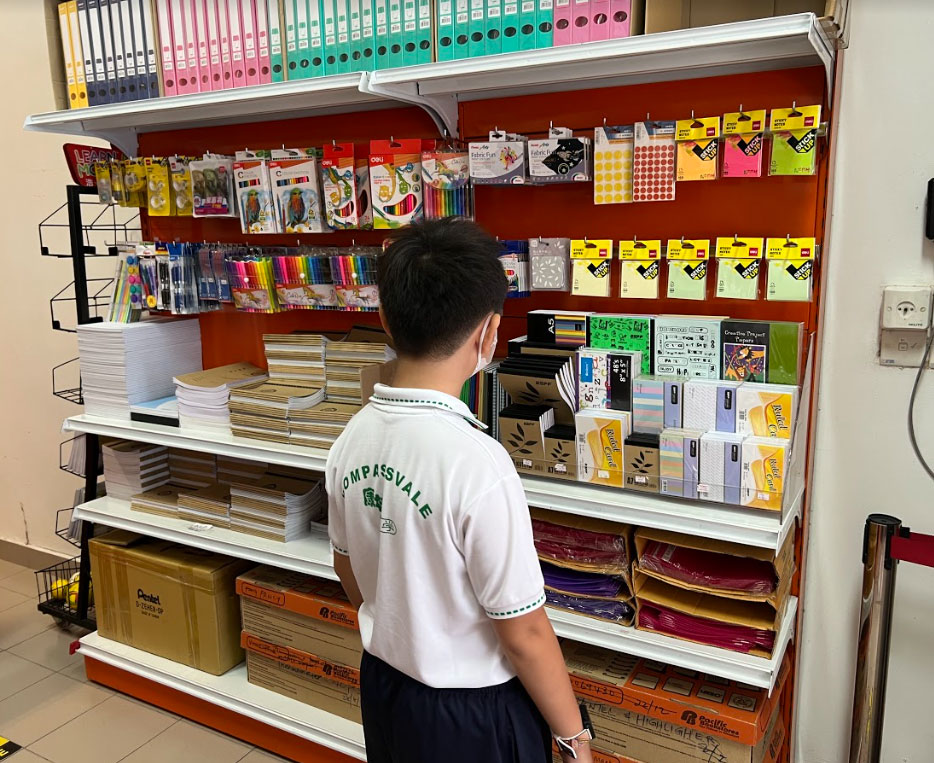
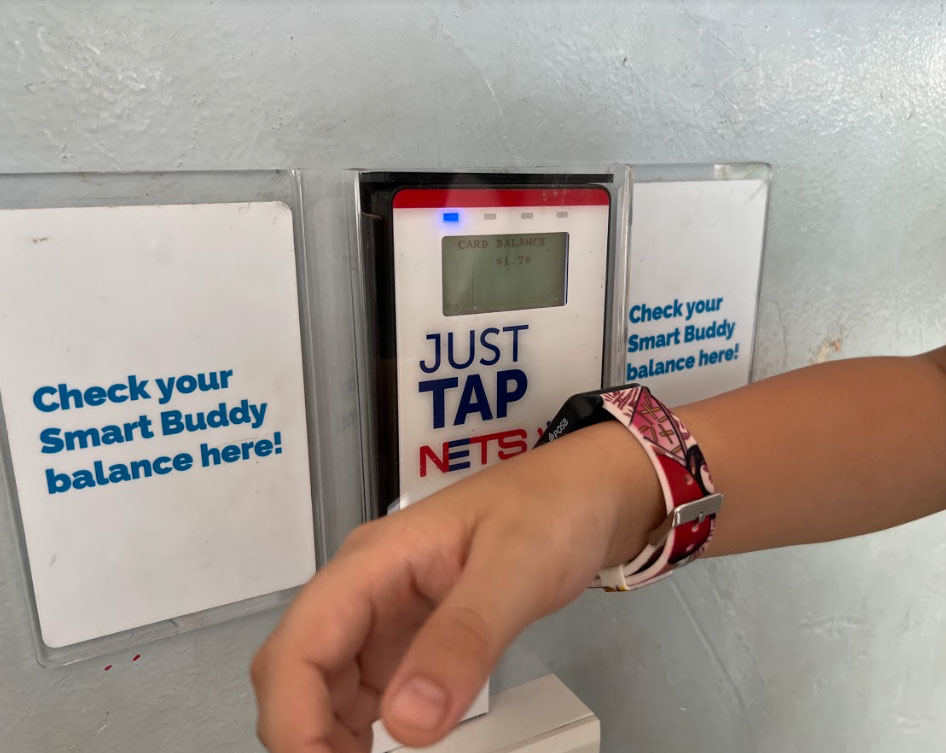
The benefits of the smart watch are varied.
Zixuan’s daily meal allowances with spending limits are set by his parents via the POSB Smart Buddy app, where any amount spent is deducted directly in real-time from his parent’s account.
Not only can his meal allowance be managed by his parents digitally and real time via the linked mobile app, his unspent allowances can be accumulated and auto-swept into his savings account each month, to be used on a rainy day.
The Smart Buddy card does not rack up any debt as it is not a credit card and there is no way to spend more pocket money than what Zixuan’s parents have allocated him.
The management of daily allowances (i.e. spending limit) also encourages parents to use the Smart Buddy app to kick start conversations of thrift and budgeting with their kids in a more digital and interactive way as compared to counting physical coins and notes on a daily basis.
Zixuan can also be allocated extra money in real-time to buy much needed supplies from the bookshop.
The amount children save and spend becomes a lot clearer for them as there are records of how much they have used over time.
Visually, the mobile app illustrates these records in interactive charts and tables, which also help to expose the child to these mathematical tools used in their academic studies.
Moreover, he doesn’t need to carry cash on him and handle the coins and bills in this age of Covid-19 – or risk losing the money while chasing after the bus or his friends.
The best part?
If he loses the watch, the payment ability can be temporarily disabled via the Smart Buddy mobile app.
With digital payments the sure thing of the future as they are becoming more ubiquitous these days, children have to acquire the habit of making such transactions.
POSB Smart Buddy programme
DBS/ POSB and the Ministry of Education (MOE) announced on April 13, 2022 that they are partnering to broaden access to digital payments across all primary and secondary schools, junior colleges and in Millennia Institute, by 2025.
This will be achieved through the POSB Smart Buddy programme.
DBS/ POSB will install an e-payment infrastructure, including tap-and-pay terminals, in school canteens and bookstores.
The tap-and-pay terminals can accept e-payments made through POSB Smart Buddy smartwatches or cards, as well as other payment modes, such as the School Smart Card and EZ-Link Card.
More than 50,000 students from about 90 primary and secondary schools are already using POSB Smart Buddy smartwatches and applicable cards to make e-payments in schools.
Some 600 parents whose children are on the programme have also shared positive sentiments towards using digital payments in schools.
Tech has become a deeply integral part of our lives, so it might not be a bad thing to start teaching our children early.
This is a sponsored article by POSB.
All images by Loh Hui Si.
If you like what you read, follow us on Facebook, Instagram, Twitter and Telegram to get the latest updates.
